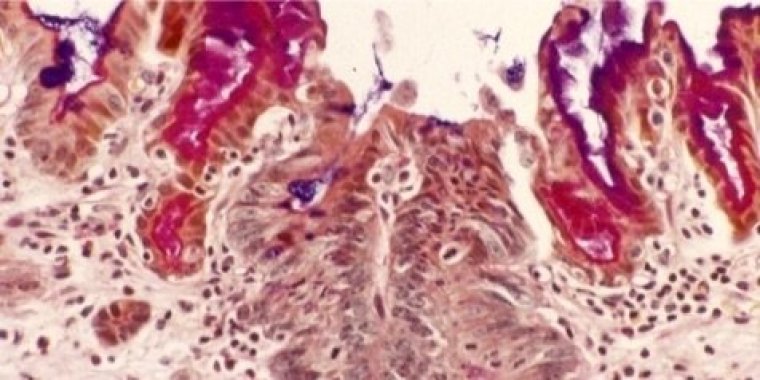| Health / Health News |
New Way Discovered for Protecting against High-Dose Radiation Damage
A new discovery might be useful to protect healthy intestinal cells from radiation damage from Radiotherapy.

Intestinal crypt. Photo: NIH
Radiotherapy is one of the most effective ways to destroy cancer cells and shrink tumors. Around 50 percent of patients with tumors located in the gastrointestinal cavity (liver, pancreas, colon, prostate, etc) receive this type of treatment, which has increased cancer survival rates in recent decades.
However, intensive radiation therapy not only damages tumor cells, but also healthy intestinal cells, leading to toxicity in 60 percent of treated patients.
Whereas reversal of toxicity is observed after radiotherapy has concluded, 10 percent of treated patients develop gastrointestinal syndrome, a disease characterized by intestinal cell death, resulting in the destruction of the entire intestine and patient death.
Damage of healthy intestinal cells is the main disadvantage of radiotherapy leading to the discontinuation and failure of efficient cancer treatment, potentially causing quick tumor recurrence.
The scientists group's work focuses on URI, a protein whose functions are not fully understood. Previous studies have found that abnormal levels of expression of this protein in certain organs can cause cancer.
The study shows that high levels of URI protein protect mice from radiation-induced intestinal damage, whereas low or no detectable levels of the protein can lead to gastrointestinal syndrome and death.
The precise functions of URI have not been identified yet. Just like pH or temperature, which the organism needs to maintain within a certain range, URI levels must also be kept within a very narrow window to regulate the proper functioning of other proteins. When URI levels are higher or lower than optimal, they may promote or protect against tumor development as well as other diseases.
The researchers developed the first genetic mouse models to study the functions of this protein in mammals. The team had observed that high URI levels protect intestinal cells from DNA damage when grown in culture.
They studied whether the protective function of URI was also effective in vivo and whether it was capable of mitigating the effects of high-dose irradiation, and hence, gastrointestinal syndrome.
To address these issues, three genetic mouse models were developed. They were the first experimental genetic mouse models designed to study specifically the role of URI and the effects of radiation on the intestine.
The control mice showed that URI is expressed in a specific dormant stem cell population located in the intestinal crypts (called crypts of Lieberkühn). URI protects these cells from high-dose radiation-induced toxicity.
After being subjected to high-dose radiation, 100 percent of the mice designed to express high levels of URI in the intestine survived gastrointestinal syndrome, whereas under normal conditions, up to 70 percent of them die. On the contrary, all the URI knockout mice died from gastrointestinal syndrome.
What distinguishes this specific stem cell population is that under normal conditions (when they express URI), these cells are quiescent, that is, they do not proliferate. Consequently, they are not exposed to radiation damage, which only affects proliferating cells.
However, when URI is not present in these stem cells, the well-known oncogene c-MYC is overexpressed, which leads to cell proliferation and increases susceptibility of these cells to radiation damage. As a result, these cells die, the intestine does not repair itself, and subsequently, the mouse dies.
c-MYC inhibitors might be useful to mitigate radiation-induced gastrointestinal syndrome in patients.
Such inhibitors will reduce lethal side effects of high-dose radiotherapy, allowing the increases of radiation doses to efficiently treat cancer and protect patients from gastrointestinal syndrome.
In addition to protecting against the lethal side effects of radiation, c-MYC inhibitors are used in cancer treatment, which means that they may have dual efficacy.
The researchers are interested to learn whether other organs with regenerative capabilities, such as the skin, have a certain stem cell population with high levels of URI. (Tasnim News Agency)
YOU MAY ALSO LIKE




